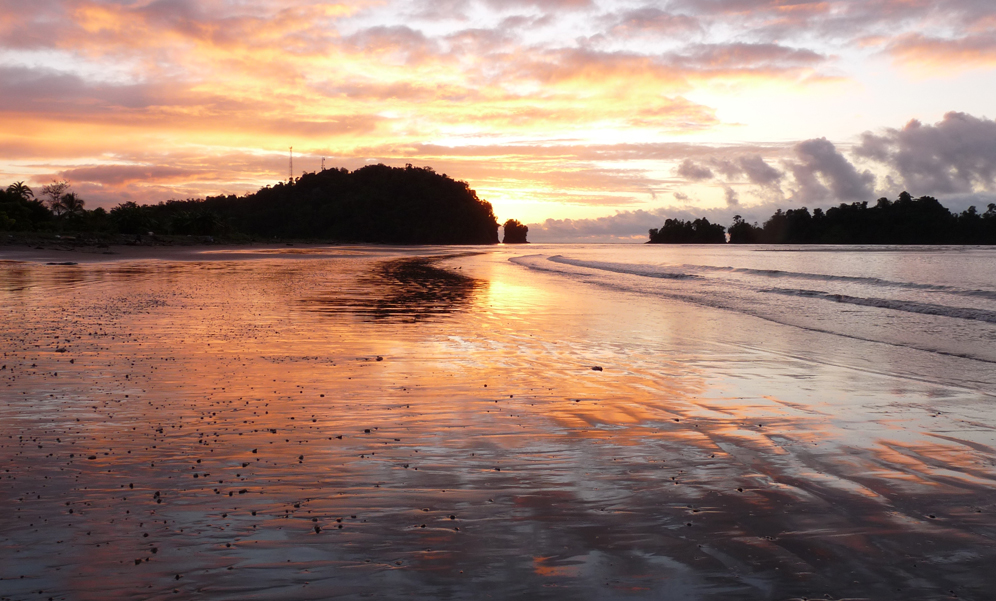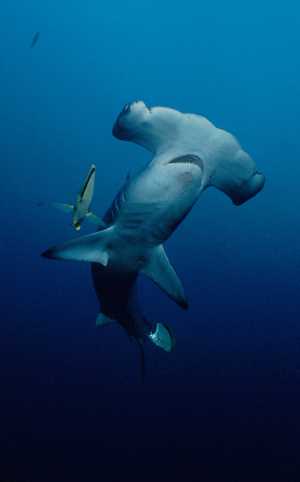Water is our greatest wealth and resource. The sea is everything. Marine resources are essential for our ecosystem and of course for people. With this in mind, we found MarViva. A foundation dedicated to protecting our waters, dedicated to fight for our present and future.
How it all began
It all started at the beginning of the 2000s, exactly in 2002 when a group of philanthropists decided to protect the great marine wealth of the Eastern Tropical Pacific. In order to do this they traveled through Ecuador, Colombia, Panama and Costa Rica.
Twenty years ago when the MarViva founders traveled by the Pacific coast of Costa Rica and Panama by boat, they saw much of the destruction of marine habitats and the few efforts that were made to protect them.
After this trip they decided there was a lot to be done. They began by proposing a model for the management and responsible use of resources based on the support of control and surveillance activities, in the establishment of standards and in the improvement of legal procedures.

Thus, in 2003, the MarViva Foundation started operations in Costa Rica and Panama. The support of the Swiss philanthropist, Stephan Schmidheiny, was key for the Foundation to begin its work.
Since its inception, the foundation works as an NGO. Always oriented to the conservation and sustainable use of marine and coastal goods and services with special attention to Marine Protected Areas. Presently it wants to develop a Marine Spatial Ordering process.
The Eastern Tropical Pacific
As I found out, there is a reason why these people went into the Eastern Tropical Pacific.

It turns out that the Tropical Eastern Pacific (PMPOT) is located in the corridor that connects Central and South America.
It sits at a Geological crossroads and at the center of five marine currents. It includes national waters, coasts and islands of Costa Rica, Panama, Colombia and Ecuador.
In addition, it has an approximate dimension of two million km2. That is almost five times the size of the state of California in the United States of America.
It sounds like a paradise and it is. But, the intense past and present geological activity has produced a set of volcanic features of the Galapagos Islands in the western part of the Landscape.
Perhaps, the hand of evolution is most evident in the Galapagos. From the endemic penguins (Galapagos penguin) and sea lions, to the Galapagos sea lions, to the coral reefs full of colorful fish all over the Pacific.
The work
The only way to know a little more about the work that this foundation does was to talk to them directly. MarViva opened its doors for us. We were able to talk with Dr. Jorge Jiménez, general director of MarViva, and he and his team let us investigate, look and allowed us to meet and exhibit this important work.

Laura Viera A: Why this area of the Pacific?
Dr. Jorge Jiménez, MarViva general director: MarViva was created with the objective of filling the gap that existed in the protection of this region. It was clear from the beginning that the marine ecosystems of the Pacific are strongly integrated and that the management of ecosystems in Costa Rica depends a lot on what is done in Colombia or Panama. The connection provided by currents and migrations of fish, cetaceans, birds, etc. It requires having a regional perspective that involves several countries in the Pacific to achieve significant impacts.
Since the moment of their creation, the organization has dealt with complications and advancements.
First of all, the countries of the region do not have a marine governance structure that ensures an integral management of their marine jurisdictions. A centralised and highly sectoralized structure is still maintained.
There is an institution for each use (fishing, tourism, navigation, defence, protection, etc.). But there are no formal mechanisms that ensure the integration of the different efforts.
As a result there is a partial and disintegrated management where there are constant conflicts between the sectors. MarViva is in the midst of these conflicts and deficiencies, trying to promote the integrated and planned management of the sea.

At the same time, the institutions responsible for the sectoral management of the sea are, in general, the weakest of the government institutions.
They are strongly limited in the legal framework and in financial and human resources to ensure management.
MarViva must, work through them, since they are the ones that have the authority and jurisdiction in the marine territories, despite the great limitations they have.
The control and monitoring of human activities at sea is very deficient due to these shortcomings, which is why illegal fishing, pollution and impacts on marine ecosystems are maintained.
Although there are serious problems in the marine area, progress has also been made. Some of them are that countries have managed to advance a little on crucial issues, generating legal frameworks that regulate uses at sea. A greater number of marine protected areas have been declared.
However, the proper use of marine areas continues to be weak since in many cases it is only ink on paper. People are increasingly aware that the sea and its ecosystems must be conserved.
This foundation has been highlighted for several reasons. They have a regional focus, an emphasis on multisectoral and community participation, and their support in scientific information.
Its working model is based on political advocacy, participatory processes, multi-sectoral alliances. Likewise, they try to promote policies and norms, raise awareness, raise awareness and favor ambios of attitude regarding the marine theme.
The mission they have is as clear as the water they wish to protect. They wish to promote the conservation and sustainable use of marine and coastal resources in the Eastern Tropical Pacific.
Working as a team
In order to achieve all the objectives that have been established they have considered that the team must be multidisciplinary.

The conservation and management of marine ecosystems in the Eastern Tropical Pacific, is not only a regional issue, it is a multidisciplinary topic.
In other words, the necessary actions require knowledge in areas as diverse as marine biology, environmental law, markets for marine products, communication, etc. MarViva has consolidated a multidisciplinary team in each of its offices (Bogotá, San José, Panama). In this way, offering the ability to face the various tasks required to manage and conserve the seas to which multiple sectors have access and interest.
From the beginning they were very clear that working as a team with people from different areas of knowledge was primordial. For this reason, they have a team composed of marine biologists, sociologists, anthropologists, oceanographers, geographers, marketers, communicators, political scientists, business administrators, lawyers, among others.
Laura Viera A: Who do you work with to achieve the objectives you have set?
Dr. Jorge Jiménez, MarViva general director: We work in the management of alliances between the private sector and small community entrepreneurs, suppliers of fishery products and tourist services.
Dealing with the issues
MarViva tries to generate greater opportunities for socioeconomic development. There is a simple reason for this: it is the only way to take advantage of natural resources while minimizing the impact on ecosystems.
Having viable economic activities for communities in coastal areas is essential. They depend on healthy resources for their family sustenance. In addition, these alliances are conceived as a conservation strategy from two angles: supply and demand.
States must regulate all human activities at sea through their institutions, which are characterized by different and, at times, contradictory approaches, as well as by the poor coordination between them.
People should understand that coastal marine activities such as tourism and fishing are the main source of work in the coastal areas.
Therefore, environmentally sustainable practices must be established. In return, allowing these communities to have a dignified life, with an appropriate economic income and with growth options for the future.
The relationship of people with the ocean is increasingly wide. Multiple sectors are expanding their uses and productive activities in diverse fields and of growing interest such as energy, conservation, tourism, navigation and mariculture.
MarViva generates mechanisms so that the relationship between Sea-State-Users guarantees a sustainable use of ecosystems and human activities at sea. It also supports the strengthening of public institutions in Colombia, Panama and Costa Rica.

In the last six decades, pollution, maritime traffic, the pressure exerted on marine resources, the development of coastal infrastructure and the use of marine space in general have increased.
Likewise, the unregulated exploitation of marine resources has degraded the marine ecosystem and generated conflicts among users for access to resources and use of the marine space.
Laura Viera A: Do you consider that it is possible to achieve a bio diverse, healthy tropical Eastern Pacific? How do they work on it?
All these changes lead to better governance and better management of the sea and its resources and we trust that in a few years more and more changes will be made in this direction.
Dr. Jorge Jiménez, MarViva general director: We believe that we can influence to achieve the change that is needed. The process is slow and complex, but possible. In 15 years we have seen positive changes that, although insufficient and slow, go in the right direction to achieve a productive and biodiverse Eastern Tropical Pacific where human activities are developed hand in hand with ecosystems. This type of change requires time, because it implies changes in human behavior, legal frameworks and the functioning of state institutions. However, a gradual change is being generated and it allows us to see comparative improvements with what happened two decades ago. Citizens are more aware and are demanding changes in the way we manage our seas and their resources. Scientific institutions have come to know more about marine ecosystems and have better information to make decisions about management. The productive sectors are more active and present in making decisions about how to manage resources and regular their exploitation.

In matters of inter institutional strengthening, several things have been achieved in each of the countries where they work.
In the case of Panama, in 2004 MarViva participated in the process of the declaration of the Coiba National Park, of 2,031 km2 of marine extension, and supported its declaration as World Heritage of Humanity in 2005. Support for the creation of the Protected Area of the Wetland Bay of Panama, in February 2015, with 85,664 hectares of land surface.
In Colombia, they supported local authorities in the establishment of the Exclusive Artisanal Fishing Zone (ZEPA) and in the extension of the management area from 2.5 miles to 12 miles from the coastline in the north of Chocó. Since 2014, MarViva supported the creation of the District.
And, in Costa Rica, MarViva contributed to the creation of the first Marine Protected Area in the country, known as the Marine Submarine Management Area, with 9,640 km2 of marine extension as a buffer zone to Isla del Coco (process of minus six years of incidence, culminated in March 2014).
Another issue that is key in their work is the one referring to Marine Spatial Planning. This is a public process that seeks to achieve a balance between the ecological, economic and social objectives in an area of interest. The idea is to implode the active participation in decision making, of those sectors interested in the marine space and its resources.
This process directly involves users who depend on, conserve and affect marine resources, such as the artisanal, industrial and sports fishing sectors, tour operators and tourism chambers, agricultural producers, communities and their grassroots organizations. universities, government institutions, international organizations, non-governmental organizations, and all those actors with interests in marine resources in the area, both in the short and long term.
Working for change
The general director of Marviva assured us several things. The first is that the task of changing perceptions, cultures, legal and institutional frameworks is not easy. However, within these efforts, the greatest support has come from coastal communities that see with concern the deterioration of marine ecosystems and the decline in their economic well-being. Through them it has been possible to declare protected areas, as well as regulations for fishing and tourism.

The second is that, despite their economic limitations, these groups provide information, provide leaders who are inserted into the decision-making process and change their productive practices to reduce their impact on marine environments. Working with these communities is motivating because of their willingness to change.
The third was that young people from college and university have also been very supportive in awareness campaigns. They have participated and taken actions to change consumption patterns and press for changes in the legal framework. This arrangement has made our task easier.

MarViva has created a methodology aimed at promoting OEM processes with low technological inputs that allows the countries of the region to initiate this multisectoral planning in their seas.
This methodology has been validated in pilot projects in Costa Rica, Colombia and Panama. Although the context of each location is different, the same methodology is applicable because it focuses on the participatory process.
This interview was enlightening. Not only did we have the opportunity to learn and expand our knowledge on marine conservation issues, but we could delve a bit into the problems that lie in wait for them. Foundations like Marviva, the work team they have created and their methodology help us to improve and give people and animals a chance. The issue is not to survive, it is to be able to live and enjoy life.


